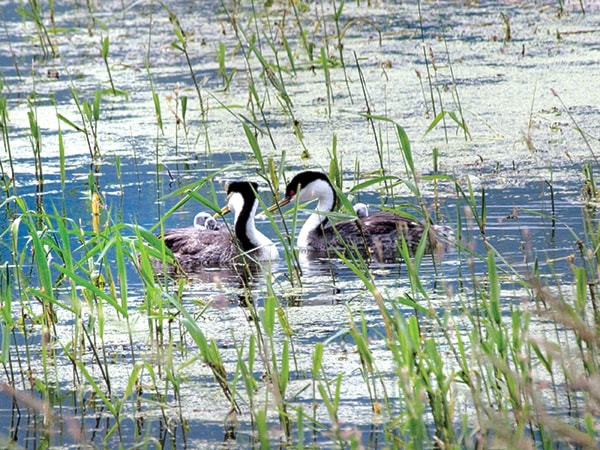Flooding last spring may have played havoc with western grebe family planning but the birds persevered and, in the end, the count was the highest on record.
“The spring and summer of 2012 have been memorable indeed,” says Edgar Dahl, in his report.
Dahl and wife Monica took over co-ordinating the annual grebe count from Frank and Doris Kime, who kept track of the birds’ arrivals and departures for many years.
Dahl says Shuswap Lake water levels were exceptional and caused many alterations to naturalists’ expectations of the western grebes’ and other water birds’ ability to survive.
“The rapidly rising water levels, especially in late June, resulted in large-scale destruction of nests and their contents, which were seen to contain eggs in some of the closer nests,” Dahl writes. “In one disastrous episode, there were 47 nests destroyed east of the bandstand due to water level increases and wind.”
Dahl says keeping track of the number of grebes was a challenge because the birds had dispersed into areas where viewing was impossible – probably because of the height of the reed canary grass.
The grebes sought new homes, some of the birds locating between the railroad and the Trans-Canada Highway, in the open water of the Adams Lake Band property.
On July 4, 17 nests and 58 adult western grebes were counted in that area.
“But by that time or shortly thereafter, the water levels began to recede rapidly, and the grass seemed to grow, so we could not determine whether those nests produced young or just became inaccessible as the water levels declined,” writes Dahl. “But somehow, though our efforts to count the grebes produced wide variations in numbers of adults and young from week to week, the counts conducted toward the end of July gave us hope.”
On Aug. 19, the count revealed 204 adults and 127 young in 91 families and the final count for August 24, 2011 was 197 adults and 111 young in 76 families.
“In August, they showed up with a bang; they went from 21 to 156 in about 10 days to two weeks.”
Dahl says the grebes finally settled in the mouth of the Salmon River and over by Sandy Point.
“This year’s count is probably the highest ever reported – that’s absolutely phenomenal, I would say.”
